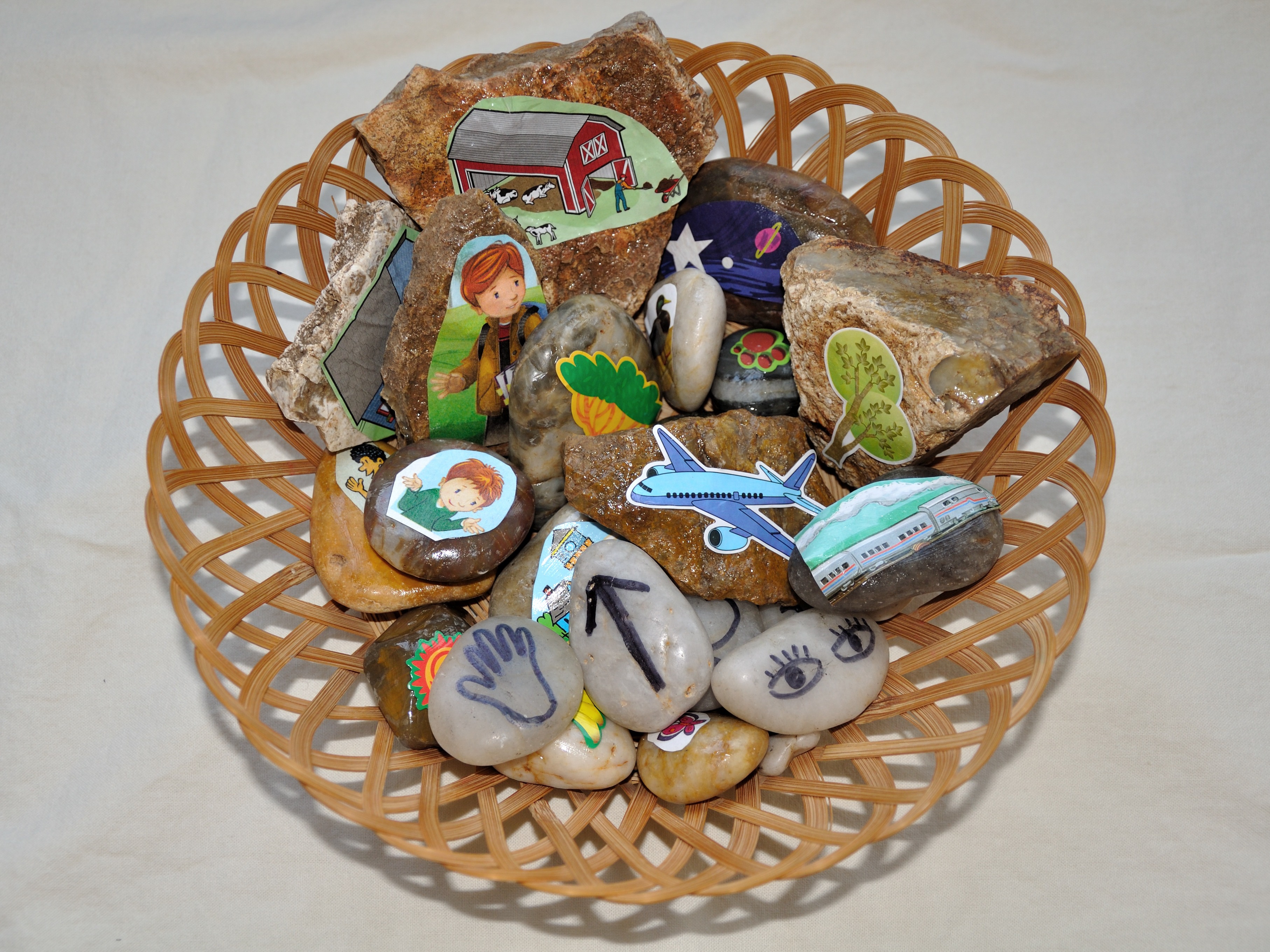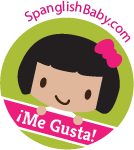Érase una vez…Once upon a time there were… three children who loved to hear stories. And so, like millions of parents around the world, I told story after story, and soon the three children began to tell stories, too.
Stories are an integral part of childhood and language development. Story stones are a wonderful way to help children begin to tell stories in Spanish. The stones are colorful and fun to hold and arrange. This is important because children learn language best through movement and active participation. Also, a story stone collection can grow and change as your child acquires more language and different interests.
Story stones are easy and inexpensive to make. First, you need flat, smooth stones. Kids have a great time finding and washing the stones, or you can buy them at craft stores.
Once you have the stones, cut pictures from magazines and gather some stickers. The pictures can be of anything, but they need to be small enough to fit on the stones. Use a combination glue-sealer, like Mod Podge, to put the pictures on the stones and to paint over them. Kids love this step! It will dry clear and make shiny story stones. You can also paint or draw on the stones with permanent markers.
How to use story stones with children learning Spanish
- Be sure to have pictures your child can talk about easily. Story stones can introduce new words, but the majority should be familiar.
- Make stones with symbols to represent common actions. These stones will make it easier for your child to tell a story. I draw verb symbols with a permanent marker on light colored stones from a craft store.
Draw eyes to represent verbs like ver and buscar. Arrows can represent verbs of motion like ir, correr, and subirse. A hand can represent tomar, tocar and similar actions. Draw a heart for amar and querer.
- Make stones with a happy face and sad face to encourage your child to include emotions in stories.
- At first, tell stories to your child using the stones so she can see how the pictures structure the story.
- Build patterns and repetition into your stories, the way they are used in classic stories like Goldliocks and the Three Bears. Patterns facilitate language learning.
- Use entonces, después and luego to order events in the stories.
- Let your child choose the stones as you tell a story or take turns choosing stones and deciding what happens.
- Include traditional formulas for beginning and ending stories. Érase una vez, Había una vez, and Dicen que había are traditional ways to begin a story. Colorín colorado este cuento se ha acabado, Vivieron felices por muchos años and Vivieron felices y comieron perdices are traditional endings.
- Make story stones for a classic children’s story or a favorite picture book.
Story stones inspire and support children as they learn the creative task of narration. Making the stones and telling stories is also a wonderful way to spend time with your child. So, now it’s your turn - colorín, colorado, este cuento se ha acabado.
Click here for a printable version of this activity.
Special thanks to Spanish Playground for providing this activity. Visit their site for more fun games and activities for kids in Spanish.




This idea is really awesome! The activity is easy to follow and we can create a lot stories. Gracias amigas!
Gracias Por el comentario Claudia! I loved this idea too and can’t wait to make our first story stones!
Me encanta la idea de usar las piedras para crear una historia. Nunca se me hubiera ocurrido. Gracias por la idea creo que la usare este fin de semana
Buena idea. Me gusta el uso del sentido tacto.
Neat blog! Is your theme custom made or did you download
it frkm somewhere? A theme like yours with a few simple adjustements would really
make my blog stand out. Please let me know where you got
your theme. With thanks
This is thhe perfect webpage foor anyone who would like
to understand this topic. Youu know so much its almost tough to argue with you
(not that I really will need to…HaHa). You certainly put a new spiin on a topic tuat has been discussed for decades.
Great stuff, just excellent!